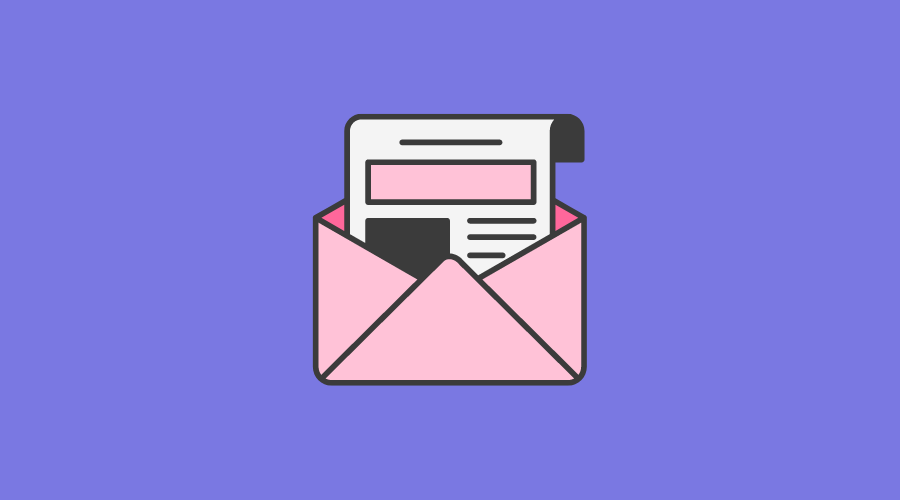
How to Write a Good Nonprofit Newsletter
Posted Mar 22, 2023 | Updated 2 years ago
A regular e-newsletter is a great marketing tool to have in your communications arsenal as a nonprofit organization in Colorado Springs.
While printing and mailing thank-you notes to donors, annual reports, fundraising appeal letters, or special invitations continues to be the best practice, e-newsletters are a cost-effective and impactful way to consistently engage your audience while balancing your budget.
What is the Purpose of a Newsletter for a Nonprofit?
The purpose of a monthly or biweekly email newsletter (or e-newsletter, for short) is to keep your supporters and community members informed of what impact your organization is making on a regular basis. That could include upcoming events, projects, announcing new staff members, and sharing about important developments with your programs and projects.
It is also a way to spread calls to action and garner support, whether that be getting volunteers to sign up for an activity or bringing awareness to a fundraising campaign.
Finally, it ensures you maintain a presence with those who are interested in your work in your area. You keep your brand relevant. It also demonstrates that you care about your followers and acknowledge they are a valuable stakeholder and a genuine part of your organization’s success.
E-newsletter Best Practices for Nonprofit Organizations
The benefit of an e-newsletter—whether distributed every week, every month, or every few months—is that it’s a cost-saving alternative to mailing printed newsletters, especially in light of increasing mailing prices and paper shortages.
Additionally, most people check their email once to three times per day; for others, it’s as soon as a new email hits their inbox.
The challenge is making your email stand out among the flood of other messages from friends and loved ones, colleagues and business partners, and other companies. How do you motivate people to open the newsletter? Beyond that, how do you get them to engage by actually reading through the content, clicking on links, or taking other CTAs?
The average open rate of an email across industries is about 20 percent. However, nonprofit newsletters tend to have a higher average, or about 25 percent, according to statistics from MailChimp—one of the leading platforms for email marketing among nonprofits. The goal is to achieve a roughly 20 to 30 percent open rate. The average click rate is about 3 to 4 percent, so trying to achieve at least 5 percent is a worthwhile objective.
Here are a few best practices for newsletters that you can apply to improve the effectiveness of your next campaign:
1. Choosing a Catchy Subject Line and Preview Text
It sounds basic, but being thoughtful and deliberate with your email subject line is the best place to start when it comes to optimizing your nonprofit e-newsletter. The same goes for the preview text, which appears in a subscriber’s inbox after the subject line. A few tips for improving your subject line include adding personalization; being descriptive; limiting punctuation; keeping it short and sweet; and being selective with emoji use.
2. Optimizing Skimmability
Skimmability is a metric used by MailChimp and other email platforms to gauge the optimization of newsletter content. It simply refers to how easy it is for readers to skim through your email campaign to get a general understanding of the various items and then click on the ones of most interest to them.
If your e-newsletter isn’t “skimmable” readers may lose interest after the first or second item and leave before they get to an item of interest that would’ve compelled them to engage further with your nonprofit organization.
3. Using Clear, Concise Language
An e-newsletter is not the place for one-dollar words.
You’ll achieve more value by keeping your text clear, concise and easily understood by a wide audience. That doesn’t mean you can’t be clever or pithy, but you don’t want to sacrifice the effectiveness of your communication by making the text convoluted or hard to follow.
This also applies to using esoteric or highly technical language and industry jargon. Since e-newsletters tend to be your most broad form of communication with donors, volunteers and interested community members—outside of perhaps social media—stick to language that is familiar to the general public.
There are other forms of communication where you can get more technical or industry-specific with those who are deeply involved with your nonprofit organization.
4. Increasing the Visual Appeal
Another email newsletter best practice is to heighten the aesthetic appeal of your content by including high-quality images and graphics and using consistent typography for headlines, subheads, and text boxes. Inconsistencies will distract your reader from the important messages being relayed in the newsletter.
Additionally, by using consistent elements, you’ll cultivate brand recognition. Followers will become familiar with your style and layout, and they’ll know how the content is organized and labeled so they can easily find the sections of the newsletter that they most care about.
5. Diversifying Content
A good nonprofit newsletter contains an array of relevant content that appeals to different interests and motivations.
You may want to include an item promoting a volunteer opportunity, along with a profile or human-interest feature; something related to fundraising that drives people to your website; a snippet from an educational or entertaining blog post related to your field of work; a message from your executive director or board president; social media links; and more. This ensures your content will be fresh, diverse and appeal to a wider array of readers.
6. Sending Out Regularly
Another area to establish consistency is the frequency with which you email your newsletter. Depending on how active your organization is or how often you have content worth sharing, you could send it out every other week, once per month, once a quarter, or with whatever frequency you want.
The important thing is to be consistent and stick to a schedule. Maybe you send it out on the first of every month or the first Friday of every month. Maybe you send it out on the 15th and 30th of every month.
What you want to avoid is to send out a newsletter, wait three months, and then send out all three in a single month. Rather, establish a routine with your subscribers so they can know what to expect.
7. Testing and Adapting
Whether you’re new to sending out e-newsletters or you’ve been doing it for awhile as a nonprofit organization, it’s never too early—or too late—to start reviewing analytics, testing different techniques, and then adapting your strategy to improve your open and click rates.
You’ll receive a report for each campaign that includes open rates, click rates, unsubscribes, and which content performed the best. If you are seeking to improve your metrics, try different strategies and be open to tweaking your content.
Creating Effective Email Newsletters for Your Colorado Nonprofit
E-newsletters are a highly effective, economical, and valuable marketing tool for nonprofit organizations in Colorado Springs. They are the perfect complement to print campaigns for special events, targeted mass mailings, and thank-you cards for donors. If you’re looking to improve your multi-touch marketing strategies, our team at Third Angle can help. We offer a variety of business marketing services to assist local nonprofits in reaching new community members, engaging devoted supporters, and reaching their specific marketing goals.

